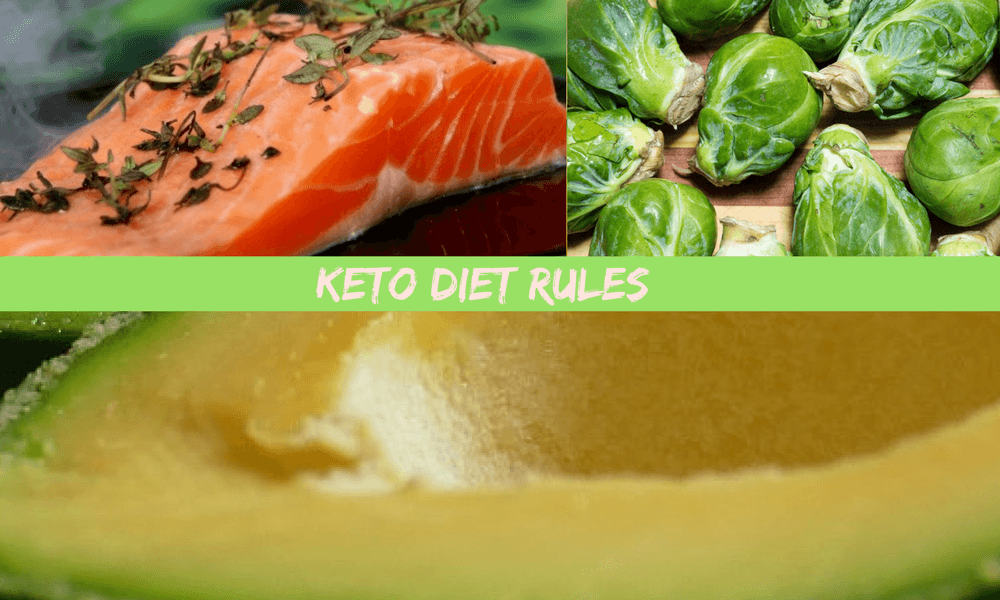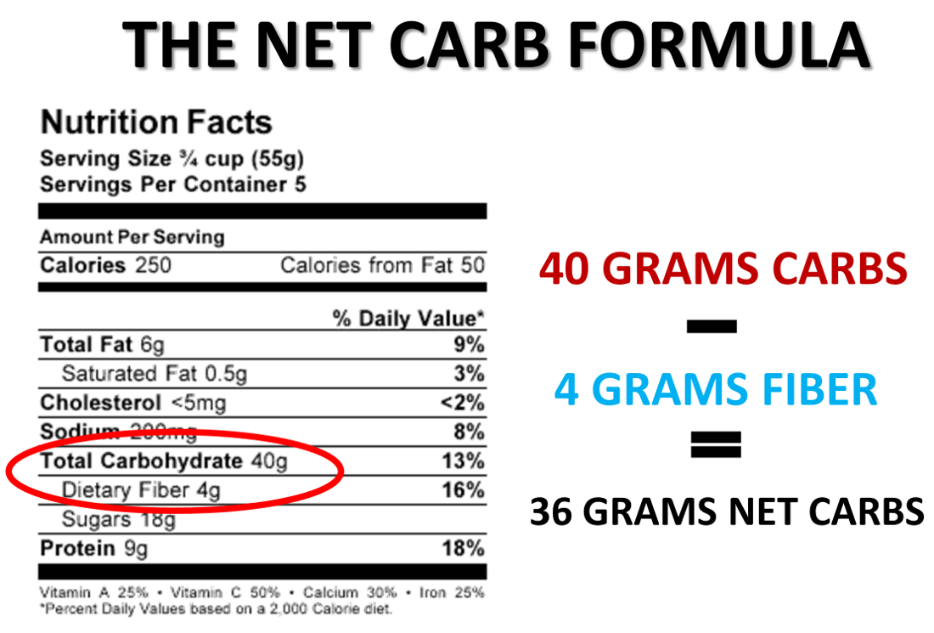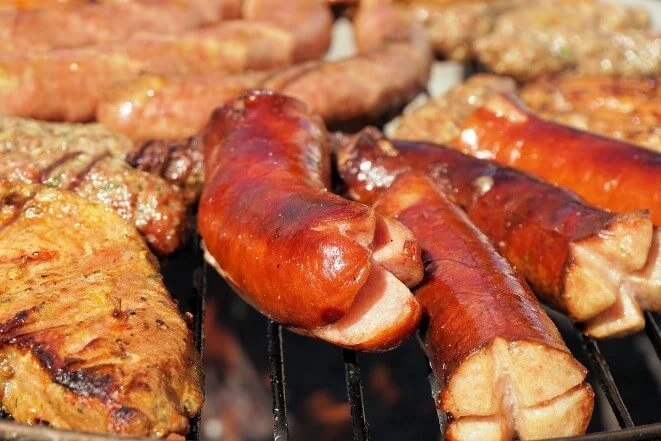Keto Diet Rules
The ketogenic diet is based on eating little carbs, adequate but not too much protein and lots of fat.

These are the keto diet rules, but the ketogenic diet is really a lifestyle and a little different for each person.
So, work on finding what works best for YOU!
This post contains affiliate links. I earn a small commission from qualifying purchases made through these links. This is at no additional cost to you and helps me to create this content.
What to Eat
Carbohydrates, protein and fat are macro nutrients and generally a keto diet consist of about 5% carbs, 20 to 25% protein and 70 to 75% fat.
This may seem tough, but these keto diet rules are easier to follow than you may imagine.
These three macro nutrients have different effects on ketosis. Their effect on ketosis depends on how they are digested and how they affect glucose levels in the blood.
- Carbohydrates raise both glucose and insulin and are therefore 100% anti-ketogenic.
- Protein is both ketogenic and anti-ketogenic. More than 50% of all protein from food is converted to glucose that raises insulin.
- Fat is 90% ketogenic and 10% anti-ketogenic. It is this anti-ketogenic element that can convert triglycerides to glucose should the brain require it.
The effect of fats on ketosis is minimal. Its main effect is really on how much weight you can lose. Your body can either burn body fat or dietary fat as fuel.
So the more weight you want to lose the more body weight you want to burn.
However, don’t go overboard with limiting your fat intake too much because this will leave you hungry and is counter productive.
Knowing this:
Still remember that ketogenic diets are very individual and has to be adapted to what works for YOU.
Now, let’s look at the quantities we need and what we should be eating.
Btw, if you are looking for “Keto for Women Over 50“, we have a specific guide for that.
Limited Carbohydrates
To start
No more than 20 gram of net carbs each day.
Over time this could be increased to up to 50 grams as most people should be able to remain in ketosis on a diet that contains up to 50 grams of net carbs.
Get your carbs from non-starchy vegetables and focus on green vegetables.
To know exactly what you should be eating check out our detailed low carb foods list.
Combine your carb with protein and or fat.
Don’t cut out vegetables all together. That is not sustainable and not a good idea at all.
Net carbs may be a concept that you are not familiar with. So, let’s have a look at it…
Net Carbs
We count only net carbs. The objective here is to determine the actual impact any carb has on the blood sugar and insulin.
Carbs that are loaded with fiber has a much lower impact on blood sugars, which is why fibers are removed from the net carb calculation.
In fact fiber does not convert into glucose like other carbs resulting in a lower glycemic load.

Carbs to Avoid
Many of the foods to avoid, are carbs. Not sure exactly what foods to avoid?
Then check out our list of Ketogenic diet foods to avoid.
Adequate Protein
Protein supports ketosis, but eat too much and it will be converted into glucose. And that of course is something we don’t want.
This is why I am always surprised when people refer to a keto diet as a high protein diet. It definitely is not.
Be sure to eat enough, so as to protect muscle mass, but not so much that you may disrupt ketosis.
Now the question is how much is enough and how much is too much?
How Much Protein?
This very much depends on how active you are.
Do you lead a sedentary lifestyle? Then you need between 0.7 to 0.8 grams per pound of lean body mass.
This will increase to 0.8 to 1 gram per pound of lean body mass if you are somewhat active.
And if you are into strength training or very active then this level increases to between 1 and 1.2 grams.
This leads us to the next question…
What is Lean Body Mass?
In simple terms it is calculated as total body weight minus body fat.
How do I Calculate Lean Body Mass?
The easiest is to use one of the online calculators. This one here uses three different methodologies to propose a lean body mass.
Keep in mind that these are only general guidelines and a better result will be obtained with a fat caliper that can measure exact body fat.
As a general rule women have a lower lean body mass than men. This is one of the assumptions built into the online calculator.
In general the average lean body mass is as follows:
- A healthy lean body mass for women are between 69 and 75 percent.
- A healthy lean body mass for men are between 76 and 84 percent.
- For over weigh and obese people this percentage will obviously be lower.
When you look at these numbers it is obvious that we need way less protein than we think.
So a sedentary person with lean body mass of 150 pounds should eat 105 and 120 grams of protein per day.
For that same person who is moderately active the daily protein requirement will be between 120 and 150 gram and for a very active person 150 to 180 gram.

The next question then is…
How Much Protein is in my Food?
I know the 105 to 120 grams of protein sounds low, but remember that a high protein food will include protein, fat, water and so on.
So a 200 gram of sirloin beef steak, depending on the fat content may contain 60 odd grams of protein, around 10 grams of fat and most of the rest will be water.
An egg contains 13 grams of protein and 11 grams of good fat.
The following are good sources of protein:
Protein Choices
- Fatty red meats, chicken with its skin, turkey and deli meats
- Fish and seafood
- Eggs
- Full fat dairy – heavy cream, sour cream, cheese
Some proteins like meat, poultry and fish has zero net carbs, whilst overs like nuts and diary have higher levels of net carbs and should therefore be consumed in moderation.
Lots of Healthy Fats
I know you were always told that fat is the enemy and you shouldn’t eat fat.
You were told that fat makes you fat. In fact it is the other way round, you need to eat fat to get thin.
Counter intuitive I know, but what we were doing weren’t working, so let’s give lots of fat a go.
To achieve and remain in ketosis, the body needs good fats.
Which are the Best Fats?
Monounsaturated fats like olive oil and saturated fats like grass fed butter, red meat, and coconut oil.
Limit polyunsaturated fats like soybean, corn and cottonseed oil.

How Much Fat?
How much fat depends on your weight loss goals, but err rather on the high side as most of us are “scared” of fats and tend to eat too little rather than too much.
As stated earlier, we want to eat roughly 5 percent carbs, 20 to 25 percent protein and the balance fat.
Before you can calculate your fat requirement, you need to work out your daily calorie requirement which is based on your weight loss goal.
From the total calories deduct the carb and protein calories and the balance should be calories from fat.
The easiest way to do this is to use one of the online calculators like this one.
Other Keto Diet Rules
Eat to Satisfaction
One of the success factors of a ketogenic diet is moving from eating “all day” to eating only when hungry and to eat to satisfaction.
After years of eating for the wrong reasons, this may be a little tough at first.
But it is also an amazing feeling when the crazy cravings and hunger pangs, we experience when we live on low fat diets, go away.
Stay Hydrated
When you start burning ketones, rather than carbs you will find that you will become much thirstier. There are good reasons for this.
One reason is that water is need to metabolize fat. It is also a natural appetite suppressant.
Drink lots of water throughout the day and if you are active, you need even more.
Increase Your Salt Intake
I know we are always told that we eat too much salt. However, when we stop eating processed food and turn to natural whole foods, we automatically eat much less harmful salt.
Many people have some side effects when they start a keto diet. These side effects include headaches and muscle cramps. Sometimes people also feel weak. These symptoms are mostly the result of an electrolyte imbalance.
Adding more salt into your diet can limit these symptoms. An excellent way to add more salt into your diet is by adding bone broth to your diet.
Finally…
When in Doubt, Eat More Fat and Fewer Carbs!
These keto diet rules are simple, but simple is not always easy. For a summary of all the above see our ketogenic diet checklist and infographic.
Need anything else? Leave us a comment and we will get back to you as soon as possible.
